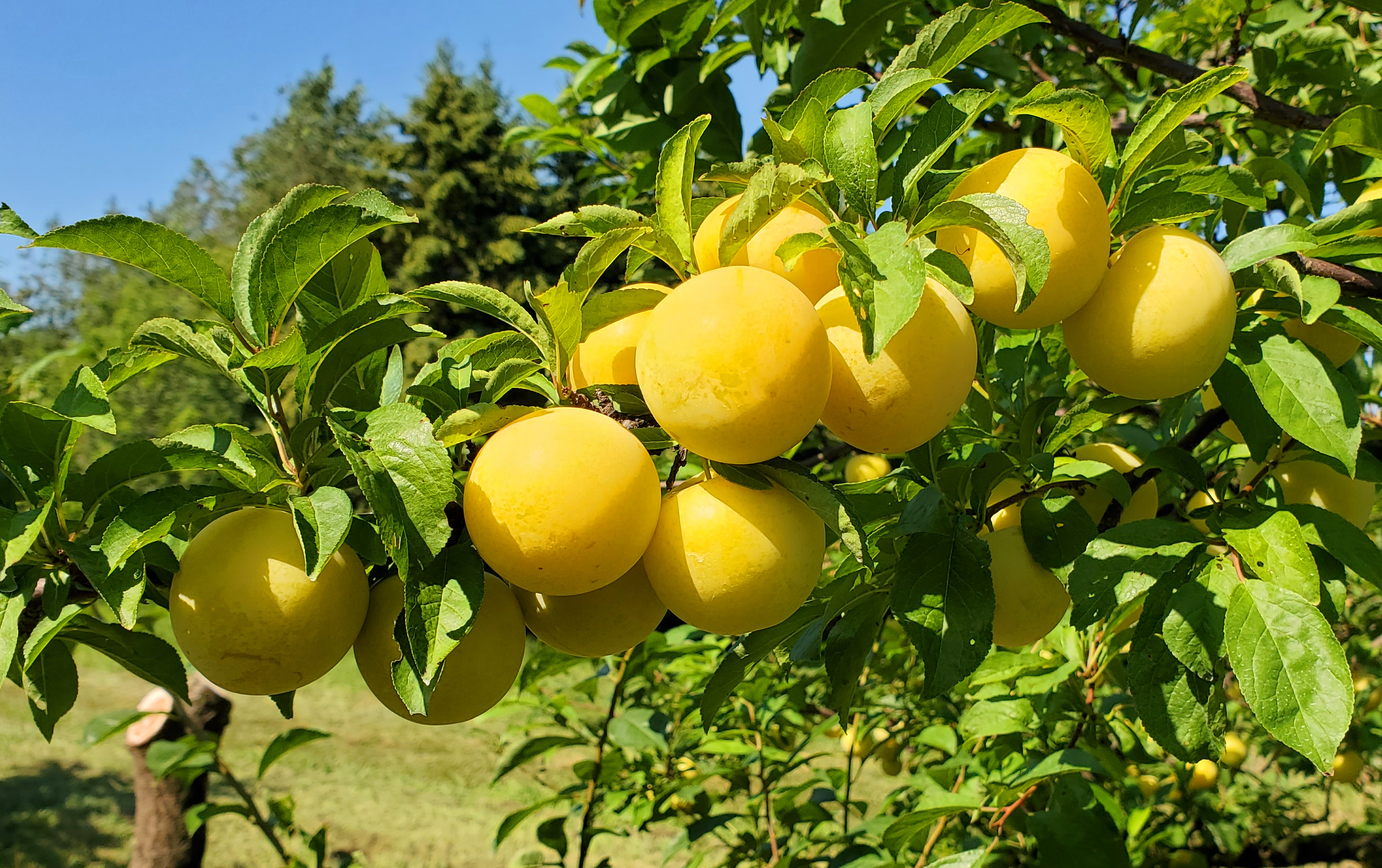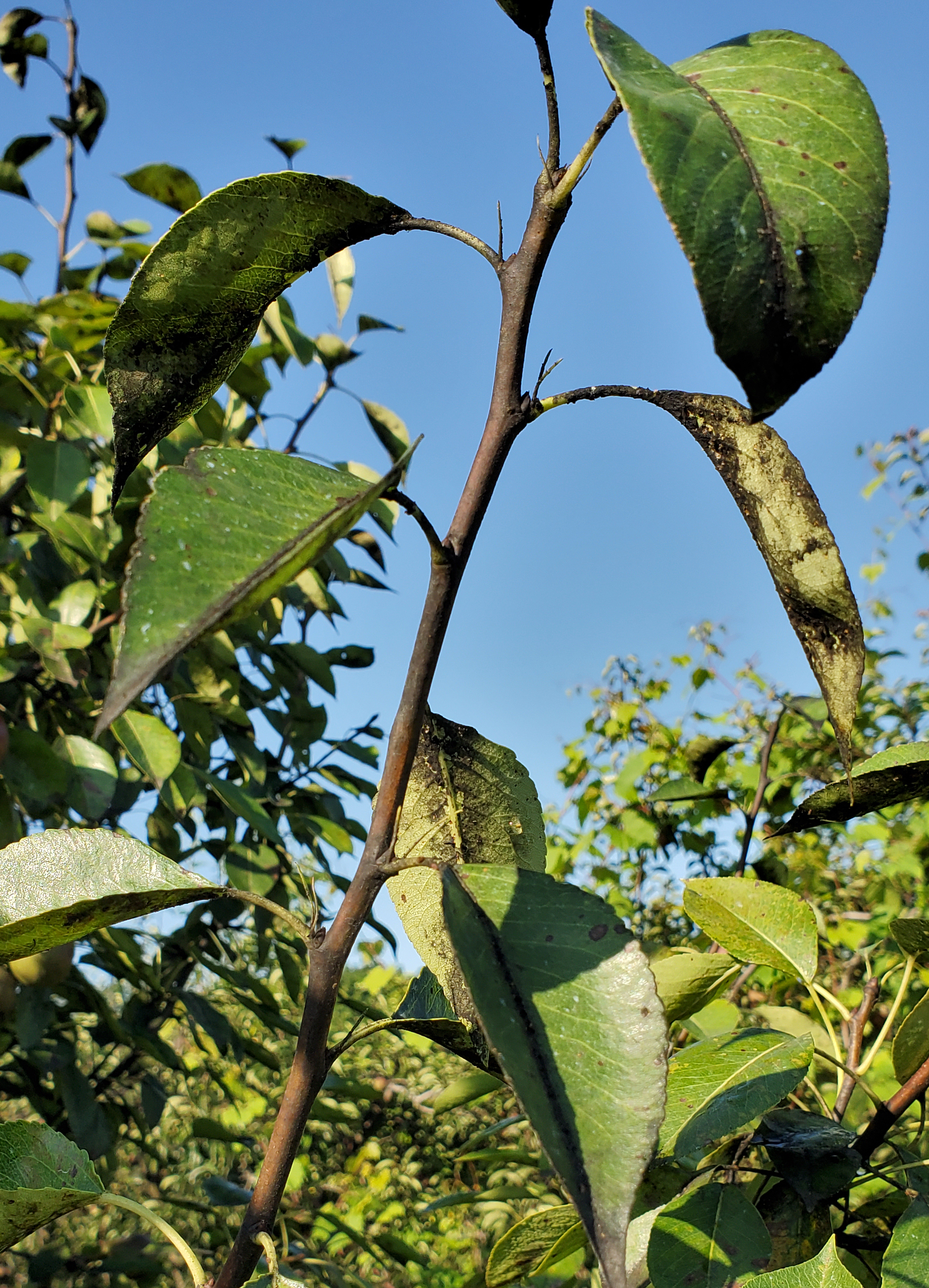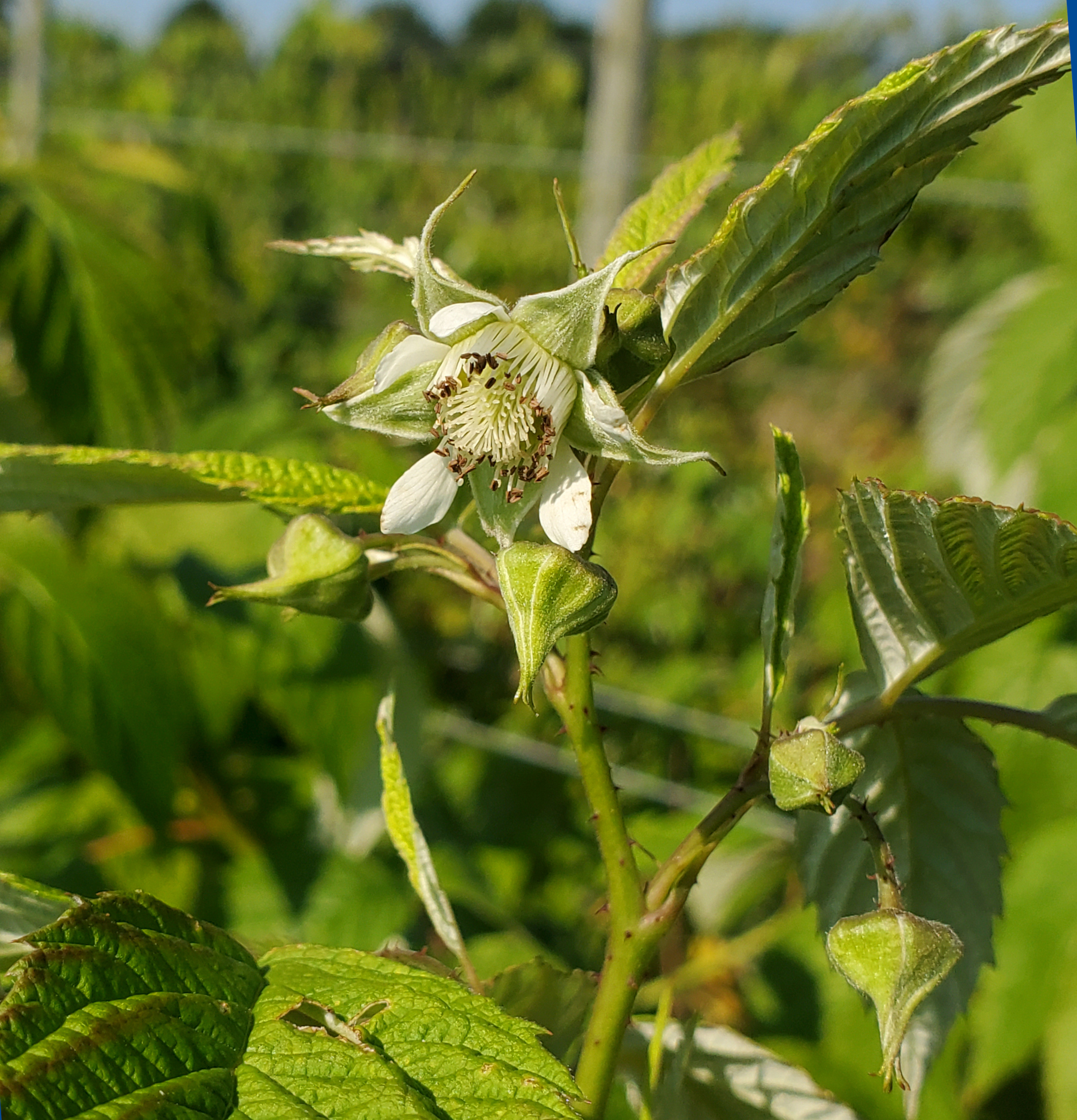Southwest Michigan fruit update – July 27, 2021
Viticulture Field Day is this Wednesday, July 28, in Benton Harbor.

Weather
Last week started seasonal with high temperatures near 80. The heat and humidity rose through the week with highs around 90 degrees Fahrenheit by the weekend. Scattered showers and thunderstorms passed through the area on Friday and Saturday bringing variable rainfall. Total rainfall for the week was a third of an inch to over 2 inches of rain, depending on location.
The heat and humidity will continue into this week with high temperatures through Wednesday near 90 F. A cold front on Thursday will drop temperatures to near 80 F through next weekend. It will also bring a decent chance for scattered showers on Thursday. The prediction for Viticulture Field Day on Wednesday, July 28, is for a high near 90 F with abundant sunshine.
With a seasonal week, we picked up a below average number of growing degree days (GDD) last week: 213 GDD base 42 and 157 GDD base 50.
|
Southwest Michigan GDD summary from March 1 - July 25, 2021 | |||
|---|---|---|---|
|
Station |
GDD 42 F |
GDD 45 F |
GDD 50 F |
|
Benton Harbor (SWMREC) |
2516 |
2184 |
1685 |
|
Lawton (Lawton) |
2527 |
2192 |
1681 |
|
Fennville (TNRC) |
2289 |
1971 |
1495 |
|
Average for the SW region |
2482 |
2152 |
1652 |
|
Average last week |
2269 |
1960 |
1495 |
Tree fruit
San Jose scale male trap catch continues to increase. San Jose scale first generation crawlers are causing damage on fruit. Japanese beetle populations are still causing damage in some areas.
Apricot harvest continues in the area. Ripening fruit has increased susceptibility to brown rot.
Pre-Redhaven peach and nectarine varieties Summer Serenade, Early Redhaven and Risingstar are in the harvest window now in central Berrien County. Recent warm and dry conditions are good for flavor development. Leaf drop from bacterial spot is conspicuous on some varieties. Brown rot is generally under control. The current Oriental fruit moth flight is winding down.
Cherry harvest is complete. Cherry leaf spot management is the primary disease concern. Chlorothalonil (Bravo, Chloronil and others) can be used post-harvest for cherry leaf spot management.
Methley, Shiro and Vibrant plum harvest is underway in the area. Some Vibrant fruit are again showing gumming/discoloration accompanied with a pit disorder. This is thought to be a physiological rather than a disease or insect problem. Oriental fruit moth is the most significant insect concern. Spotted wing Drosophila (SWD) can be a problem if fruit are kept on the tree until soft.

Early season apples are starting to color. Due to relatively warm temperatures this year, apple harvest date predictions are ahead of normal. Retain treatment for harvest management timing should be timed accordingly. Symptoms of sooty blotch and flyspeck are starting to show up on apples with weak summer fungicide programs. Flight of codling moth is increasing. Oriental fruit moth is finishing. Woolly apple aphids are flying. Aerial colonies are being seen in branches of many varieties. San Jose scale red marking are common on fruit in some orchards.
In pears, pear psylla populations are continuing to grow in some orchards. In some cases, honeydew from high populations can turn into heavy patches of sooty mold. This can discolor fruit and reduce the tree’s ability to photosynthesize.

Small fruit
SWD numbers are continuing to increase. In statewide trapping being done by the Michigan State University Extension fruit team, surprisingly low numbers of male spotted wing drosophila are being caught. Catches are mainly females. Growers doing their own trapping should be on the lookout for female flies. They are harder to see but will be a better indicator of rising populations this year. Check out this guide for identification.
Grape fruit size is increasing. Most varieties are at bunch closure. Now is the time to estimate final crop yields and adjust the crop if necessary. Some early varieties are beginning to show signs of veraison. For grape berry moth, May 25-27 can be used as general dates for wild grape bloom in southwest Michigan. This is used for determining grape berry moth biofix. According to the grape berry moth model on Enviroweather, egg laying of the third generation should begin next week.
Protectant fungicide sprays to control downy mildew and powdery mildew are the management focus before harvest. Downy mildew symptoms can be found in susceptible varieties. Heavy dews every morning and wet humid conditions are excellent for this disease. Late July and August are when growers should be focused on preventing this disease, which can defoliate the vines before harvest.
With the beginning of veraison, the threat of black rot symptoms in fruit is past. Wine grape growers will want to include botrytis in their disease management plans, especially in tight bunched varieties. Ensure fungicide residues are in the interior of the cluster. Several reports of botrytis in vinifera grapes have come in already.
Blueberry harvest of Bluecrop is winding down and growers are moving to later varieties such as Jersey. Fruit size is generally excellent. With the heavy rains in June and early July growers are complaining of soft fruit and fruit rots. Disease control focuses on protecting fruit from anthracnose and alternaria. Protecting green fruit is easier than stopping infections on blue ripening fruit.
SWD numbers are increasing. Blueberry maggot numbers are decreasing. Growers should trap for SWD. Sample early ripening fruit to determine if treatment is necessary in fields where not enough fruit is ripe to justify harvest.
Strawberry fields are showing good regrowth after renovation. Strawberry root weevil is starting to show up in some sites. The best time to target this insect is when the adults are feeding on leaves now instead of trying to kill the larvae feeding on the roots later in the summer. Growers should also be aware of potato leafhopper. Treatments with systemic materials to control this pest can be made as soon as most of the new leaves have emerged. This pest often moves in from other fields when they are mowed.
Raspberry harvest continues. Summer red raspberry harvest is tapering off. Blackberry harvest underway. Bloom has begun on the primocanes in some early fall bearing varieties. SWD larvae are being found in unsprayed backyard fruit. SWD catches in monitoring traps are beginning to increase.

Miscellaneous crops
Chestnut bloom has ended.
Hops are flowering. Cones are beginning to develop in some varieties. The second generation of European corn borer is currently flying.
Currant harvest is complete.
Cranberry fruit is sizing.
Upcoming meetings
Viticulture Field Day will be returning to an in-person event this year. The event location is 12 Corners Winery on July 28, 2021. This will be an all-day event. Check in opens at 8 a.m., presentations start at 9 a.m. The traditional steak dinner and wine tasting will return. There will be limited attendance. Pre-registration is highly recommended.
Related articles
- Southwest Michigan fruit update – July 20, 2021
- Summer options for controlling San Jose scale in Michigan tree fruit crops
- Michigan grape scouting report – July 22, 2021
- Pest management approaches in a winter or freeze damaged grape vineyard
- Banning black rot and Phomopsis from young grape clusters
- Renovate perennial strawberry fields to maximize yield next year



 Print
Print Email
Email




